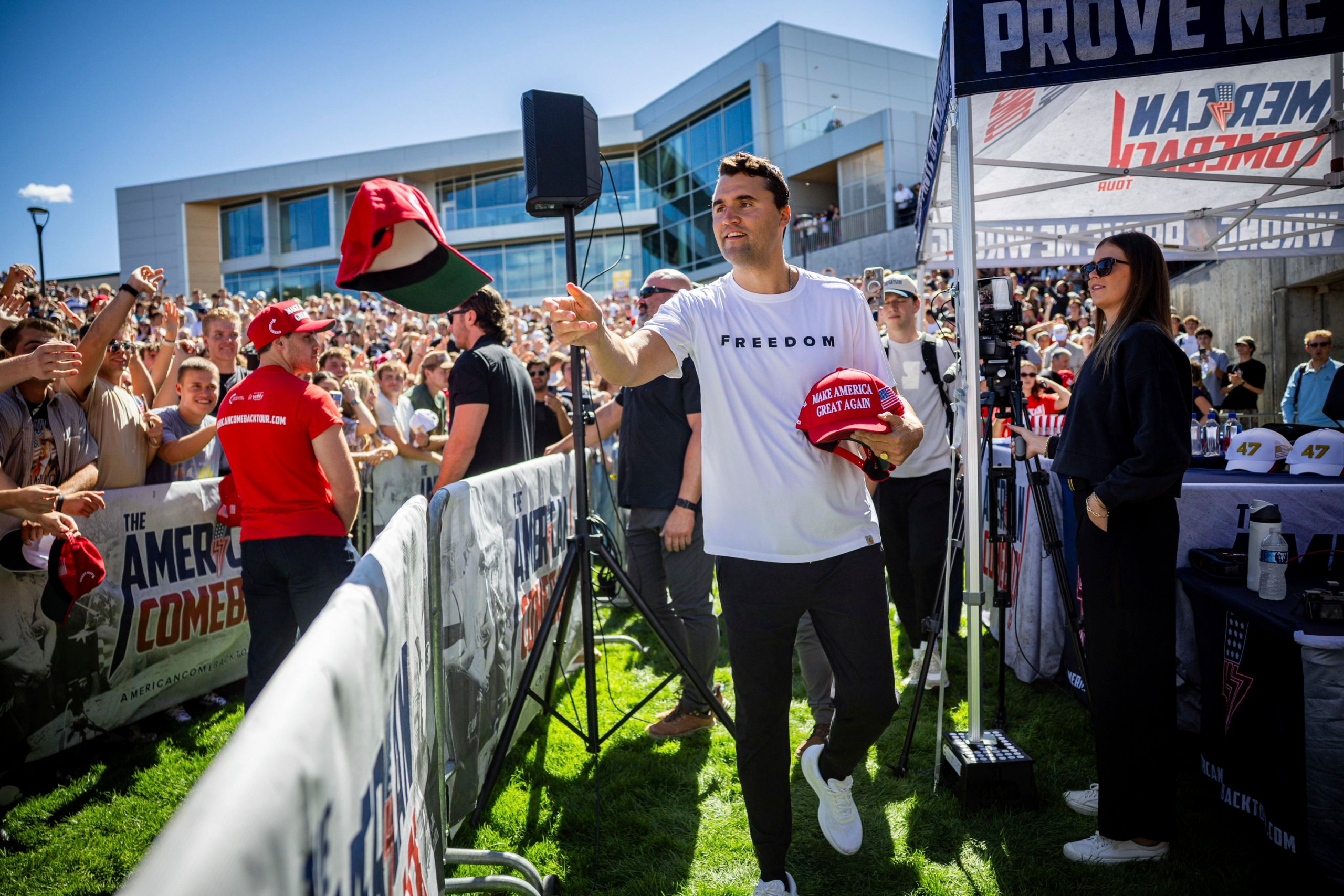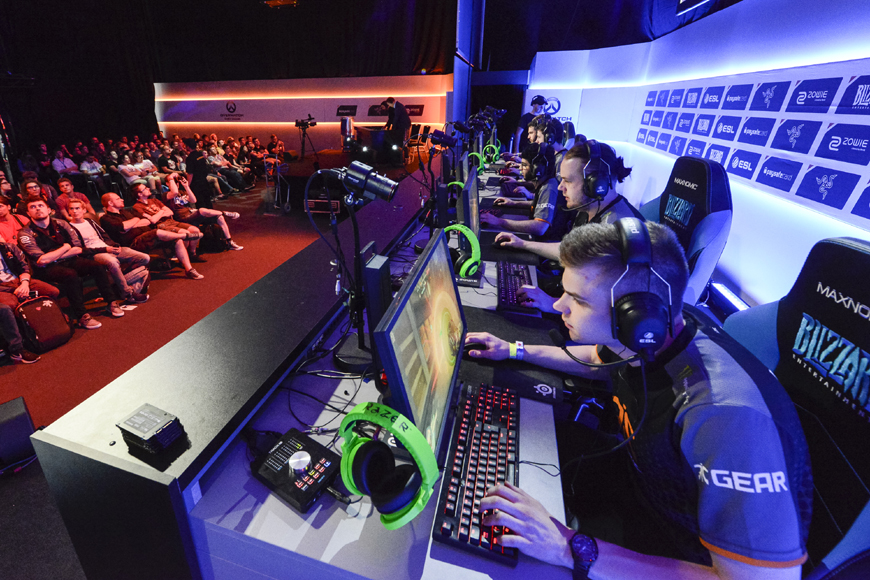The news that Charlie Kirk was killed at an event in Utah has rippled through the sports and fitness community with a mix of disbelief and sorrow. While the name Charlie Kirk might evoke different associations depending on the arena—be it political activism or athletic pursuits—the Charlie Kirk at the heart of this tragedy was a respected figure in the world of outdoor endurance sports. His sudden passing at what was supposed to be a celebration of human potential and resilience is a stark reminder of the unpredictable nature of high-stakes physical performance and the inherent risks involved in pushing the boundaries of our capabilities.
Utah, with its breathtaking landscapes and rugged terrain, has long been a haven for athletes seeking to test their limits—whether through trail running, mountain biking, or rock climbing. The event where Kirk met his untimely end was emblematic of this spirit, drawing participants from across the country who were eager to challenge themselves against nature’s toughest obstacles. Yet, as much as training methodologies and sports psychology have advanced to optimize performance and reduce injury, the environment itself remains an uncontrollable variable. This reality was tragically underscored by Kirk’s death, which preliminary reports suggest stemmed from a sudden medical emergency exacerbated by the harsh conditions on-site.
Performance psychology, a field that has gained increasing traction in recent years, aims to prepare athletes not just physically but mentally for the stresses of competition. The ability to maintain focus, manage anxiety, and adapt to unforeseen challenges often differentiates champions from also-rans. Kirk was known for his dedication to mental conditioning, frequently advocating for techniques that blend mindfulness with rigorous physical training—a philosophy that resonates with insights found in academic analyses of athlete resilience. However, even the most well-prepared minds and bodies can be vulnerable when confronted with sudden trauma or environmental extremes.
The circumstances surrounding Kirk’s death have sparked broader conversations about safety protocols in outdoor sports events. Organizers of such gatherings are continually balancing the thrill of adventure against the necessity of risk mitigation. This includes implementing thorough medical screenings, real-time monitoring of participant health, and rapid response capabilities. Yet, as this tragedy illustrates, no system is foolproof. It also raises questions about the adequacy of existing training programs in preparing participants for the unexpected—not just physically, but in terms of emergency preparedness and situational awareness.

Beyond the immediate loss, Kirk’s death invites reflection on the cultural ethos surrounding endurance sports. There is often a glorification of pushing past pain and ignoring warning signs, a mindset that can sometimes overshadow the importance of listening to one’s body and acknowledging limits. This tension between aspiration and safety is a recurring theme in sports psychology literature and is critical to understanding how athletes navigate the fine line between peak performance and peril. The event in Utah stands as a somber case study in this ongoing dialogue.
As the community mourns, those close to Kirk and the wider network of athletes and organizers are grappling with grief and the imperative to learn from this incident. It is a moment that underscores the necessity of continual evolution in how we approach training, event management, and athlete welfare.
In the end, Charlie Kirk’s passing is a poignant reminder that behind every record broken and summit reached lies a human story, fragile and complex. His legacy, while marked by tragedy, may well catalyze meaningful change in how the sports community approaches the intersection of ambition, health, and safety. It is a narrative that calls for empathy, critical reflection, and a renewed commitment to safeguarding those who dare to push the limits of human endurance.
For those interested in the broader context of athlete health and the risks inherent in outdoor pursuits, the Wikipedia page on sudden athlete death provides a comprehensive overview of the medical and environmental factors involved. Understanding these dynamics is essential as we collectively strive to honor both the spirit and the safety of athletic endeavor.
The tragedy of Charlie Kirk’s death at the Utah event has rippled far beyond the immediate circle of athletes and organizers, casting a shadow over the broader sports and fitness community. In recent years, there has been growing awareness of the physical and psychological pressures athletes face, especially in high-stakes environments where the drive to excel can sometimes overshadow caution. Kirk’s case forces us to confront uncomfortable questions about where responsibility lies—whether with individual athletes pushing their limits, the event coordinators tasked with ensuring safety, or the culture of competitive sports that often glorifies risk-taking. Indeed, the tension between ambition and vulnerability is not new, but it feels particularly acute in an era when social media amplifies every triumph and tragedy, creating a complex web of expectation and scrutiny.
This event also highlights the unique challenges posed by outdoor and endurance sports, where unpredictable elements like weather, terrain, and altitude can exponentially increase the risks. Utah’s rugged landscapes, while breathtaking, are unforgiving, and the conditions during the event reportedly shifted rapidly, complicating rescue and medical response efforts. It’s a stark reminder of how environmental factors can conspire against even the most prepared athletes. The incident has already spurred conversations about the adequacy of emergency protocols and the importance of integrating advanced monitoring technologies and real-time data analytics to anticipate and mitigate dangers during such events.

Moreover, Kirk’s untimely death has ignited a broader debate about mental health in competitive sports. The pressure to perform, maintain peak physical condition, and meet external expectations can lead athletes down a path where they may neglect warning signs or push beyond safe limits. This narrative is increasingly recognized in sports medicine and psychology circles, with calls for more comprehensive support systems that address not just physical training but also emotional resilience and mental well-being. Organizations worldwide are beginning to implement programs that encourage athletes to speak openly about stress, anxiety, and fatigue, fostering a culture where seeking help is seen as a strength rather than a weakness.
Looking ahead, the hope is that from this sorrowful chapter, meaningful reforms will emerge—reforms that honor Charlie Kirk’s memory by making sports safer and more sustainable for future generations. This includes revisiting event design, enhancing safety gear, improving communication channels during competitions, and prioritizing athlete education on recognizing and responding to health risks. As the broader sports community reflects on this loss, it also faces the challenge of balancing the exhilaration of human achievement with the imperatives of compassion and precaution. Charlie Kirk’s story, while tragic, could thus become a catalyst for a more holistic approach to sport—one that cherishes not only records and victories but the well-being of every individual who dares to compete.
Yet, the ripples of Charlie Kirk’s death extend beyond the immediate circle of athletes and organizers; they have stirred a profound public conversation about the culture of competitive sports in America and beyond. In an era where social media amplifies every triumph and tragedy, the incident has prompted fans, commentators, and policymakers to scrutinize the often unspoken costs of high-stakes competition. The relentless pursuit of excellence, while inspiring, sometimes veils the vulnerability of those beneath the surface. Stories of athletes pushing through pain, ignoring symptoms, or fearing the stigma of weakness have long been part of the sports folklore, but now they demand urgent reevaluation. This shift in perspective challenges not only how sports are managed but also how society values the human stories entwined with athletic feats.
The event in Utah, where Charlie Kirk lost his life, was meant to be a celebration of endurance and skill, a gathering of individuals who share a passion for pushing their limits. Instead, it has become a somber reminder that even the most meticulously planned events carry inherent risks. Local authorities and event organizers have since pledged to conduct thorough investigations and implement stricter safety protocols. Yet, questions linger about the adequacy of existing measures and whether the drive to create thrilling spectacles sometimes overshadows the imperative to protect participants. This tension between spectacle and safety is not unique to this incident; it echoes in arenas from extreme sports to traditional team competitions, highlighting an ongoing dilemma in the sports world.

Moreover, Charlie Kirk’s legacy is already influencing emerging dialogues around athlete autonomy and informed consent. Advocates argue that participants should be empowered with comprehensive knowledge about potential risks, enabling them to make decisions that align with their personal thresholds and health considerations. This approach contrasts with a historically paternalistic model where organizers and coaches often dictate terms with minimal input from athletes themselves. Recognizing athletes as partners rather than mere performers could foster more transparent communication and mutual respect, ultimately creating an environment where safety is a shared responsibility.
Looking to the future, the intersection of technology and sports offers promising avenues to enhance safety and performance monitoring. Wearable devices capable of real-time health tracking could alert athletes and medical teams to early signs of distress, potentially preventing tragedies akin to Charlie Kirk’s. However, this also raises ethical questions about privacy, data use, and the pressure to constantly optimize one’s physical condition. As the sports community grapples with these innovations, it must balance technological benefits with respect for individual rights and the intrinsic joy of sport.
In the end, the loss of Charlie Kirk serves as a poignant juncture—a moment where grief and reflection converge, urging a reconsideration of how society engages with athletic endeavor. His story is not just a cautionary tale but a call to action to nurture a sporting culture that honors human dignity as fiercely as it pursues victory. Only by embracing this holistic vision can the spirit of competition continue to inspire without compromising the health and humanity of those who make it possible.

The shockwaves from Charlie Kirk’s untimely death in Utah have rippled far beyond the immediate circle of friends and family, sparking a profound reckoning within the broader sports community. As news outlets and social media platforms buzzed with tributes and tribulations, a deeper dialogue emerged about the pressures athletes face, especially in high-stakes environments where the line between personal ambition and external expectation blurs dangerously. Kirk’s passing illuminated the often invisible burdens borne by young competitors—burdens that can be compounded by the very institutions designed to support them. It’s a stark reminder that behind every headline-grabbing event lies a fragile human being, navigating a labyrinth of physical demands, mental strain, and societal scrutiny. This tragic event invites us to reconsider not just safety protocols but the cultural narratives that valorize relentless perseverance at all costs.
In the immediate aftermath, questions about event safety in Utah have come under intense scrutiny. Was the venue adequately prepared to handle emergencies? Were medical teams sufficiently staffed and equipped? While initial reports suggest that emergency responders acted swiftly, the tragedy underscores the critical need for rigorous, standardized safety measures across all sporting events, regardless of scale or profile. It also exposes a gap in preparedness for worst-case scenarios, a gap that, if unaddressed, leaves athletes vulnerable. The incident has prompted calls for comprehensive reviews, with some advocates pushing for legislation that mandates stricter oversight and accountability in event management. The hope is that from this sorrow, a blueprint for safer sporting environments can be drawn—a blueprint that prioritizes human life above spectacle.
Yet, beyond logistics and regulations, Kirk’s death has sparked a broader cultural conversation about how society views athletes—particularly young ones. The narrative often frames athletes as paragons of strength and resilience, sometimes neglecting the psychological toll that such expectations impose. Mental health advocates have seized this moment to highlight how the glorification of toughness can discourage athletes from seeking help or acknowledging vulnerability. The sports world is gradually awakening to the necessity of integrating mental health support as a fundamental component of athlete care. This shift is not merely about preventing tragedies but about fostering environments where athletes can thrive holistically, embracing their complexities rather than suppressing them.
The ripple effects of this incident may also influence how future events are planned and perceived. Organizers might increasingly incorporate athlete voices in decision-making processes, ensuring that safety and well-being are not afterthoughts but foundational principles. The integration of advanced technologies, such as AI-assisted monitoring systems and enhanced communication tools, could become standard practice, enabling real-time risk assessment and rapid response. However, as these innovations develop, ethical considerations around surveillance and autonomy will need careful navigation to avoid inadvertently creating new pressures or intrusions.
Ultimately, Charlie Kirk’s story is a somber chapter in the ongoing narrative of sports—a narrative that balances awe-inspiring feats with human vulnerability. It challenges stakeholders to embrace a more compassionate, nuanced approach that honors athletes not just for their achievements but for their humanity. As the sports world mourns, it also stands at a crossroads, with the opportunity to transform grief into meaningful change. Only by doing so can the legacy of individuals like Kirk transcend tragedy, inspiring a future where the pursuit of excellence walks hand in hand with the preservation of life and dignity.
The shockwaves from Charlie Kirk’s untimely death have reverberated far beyond the immediate circle of those present at the Utah event. In the days following, conversations have shifted from mere condolences to deeper examinations of the systemic issues that may have contributed to such a tragedy. Historically, the sports world has grappled with the tension between pushing human limits and safeguarding the individuals who dare to test them. This incident has reignited debates reminiscent of past moments when the line between ambition and recklessness blurred, reminding us that the glory of sport often comes at an unseen cost. The public outpouring of grief has been matched by calls for greater transparency and accountability, with many questioning whether enough was done to prevent such a catastrophe.
The role of event organizers, medical personnel, and governing bodies is under intense scrutiny. In an era where athletes’ health is increasingly prioritized, Kirk’s death serves as a stark reminder that protocols, no matter how stringent, can never be foolproof. Yet, it also highlights the necessity for continuous reevaluation and adaptation of safety measures in light of evolving sports dynamics. The Utah event, celebrated for its innovation and scale, now stands as a poignant case study in balancing spectacle with safety. Some insiders suggest that the pressure to deliver groundbreaking performances and attract sponsorships may inadvertently sideline critical conversations about risk management. This tension between commercial interests and athlete welfare is not new, but the tragedy has brought it into sharper relief.
Amidst the sorrow, there are glimpses of resilience and hope. Fellow athletes have taken to social media and public forums to share their experiences, advocating for a culture that values mental and physical health equally with competitive success. These voices are beginning to coalesce into movements aimed at reforming sports culture from the ground up. Moreover, technological advancements promise new tools for monitoring athlete well-being, from biometric sensors to AI-driven analytics that could predict and prevent health crises before they escalate. However, these innovations come with their own set of ethical dilemmas, especially concerning privacy and the potential for over-surveillance.

Looking ahead, the legacy of Charlie Kirk may well be defined by the changes his death inspires. It is a call to action for the entire sports community to foster environments where safety is not sacrificed for spectacle. The conversations sparked in the wake of this tragedy could lead to more inclusive dialogues involving athletes, medical experts, and organizers working collaboratively to redefine what it means to compete safely. While no measure can erase the pain of loss, there is an opportunity to honor Kirk’s memory by building a future where the human cost of athletic achievement is not borne in silence but addressed openly and compassionately. In this way, the narrative of sport continues—not just as a testament to human potential, but as a reflection of our collective responsibility to protect it.




